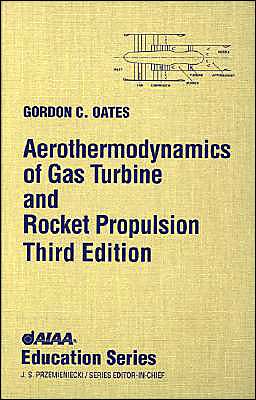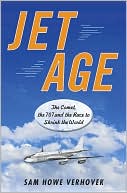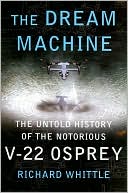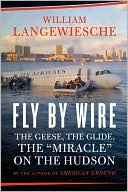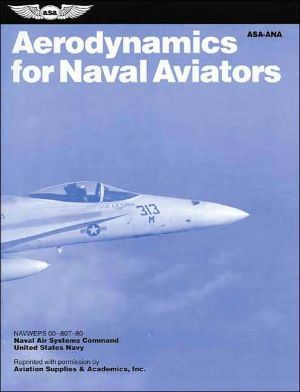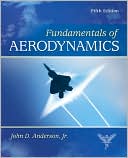Aerothermodynamics of Gas Turbine and Rocket Propulsion
Best Seller! Winner of the Summerfield Book Award. This seminal book on gas turbine technology has been a best-seller since it was first published. It now includes a comprehensive set of software programs that complement the text with problems and design analyses. Software topics included are atmosphere programs, quasi-one-dimensional flow programs (ideal constant-area heat interaction, adiabatic constant-area flow with friction, rocket nozzle performance, normal shock waves, oblique shock...
Search in google:
Best Seller! Winner of the Summerfield Book Award. This seminal book on gas turbine technology has been a best-seller since it was first published. It now includes a comprehensive set of software programs that complement the text with problems and design analyses. Software topics included are atmosphere programs, quasi-one-dimensional flow programs (ideal constant-area heat interaction, adiabatic constant-area flow with friction, rocket nozzle performance, normal shock waves, oblique shock waves), gas turbine programs (engine cycle analysis and engine off-design performance), and rocket combustion programs (Tc and Pc given, Hc and Pc given, isentropic expansion). Used as a standard text in more than 50 universities, the book and software will continue to fulfill the need for a comprehensive book on the principles of propulsion. System Requirements: IBM 386 (compatible) or higher, 8 Mb RAM, 20 Mb of available disk space.
1: Introduction\ 1.1 Purpose\ The propulsion provided by airbreathing and rocket engines is basically similar in that thrust is obtained by generating rearward momentum in one or more streams of gas. In the case of a rocket the propulsive gas originates onboard the vehicle, whereas in the airbreathing engine most of the propellant gas originates from the free air surrounding the vehicle. This volume presents and explains the aerothermodynamics of rockets and airbreathing engines, detailing the mechanisms of the fluid and thermodynamic behavior in the engine components and revealing the overall behavior of engines and their interactions with the flight vehicles they power.\ The interaction of the various components of aircraft and rocket engines, as well as the interactive nature of the entire engine with the flight vehicle, necessitates the extensive use of simplified physical models to provide analytical estimates of performance levels. As a result, the detailed calculations, although straightforward conceptually, can often be quite complex algebraically. For this reason, this introduction will outline many of the aspects of rocket and airbreathing engines in purely descriptive terms. The required analytical methods to support the stated behaviors are developed in subsequent chapters.\ 1.2 Chemical Rockets\ Rockets are generally classified as either "chemical" or "nonchemical," depending upon whether the energy that eventually appears in the propellant stream arises from the release of internal chemical energy via a chemical reaction or is supplied to the propellant from an external source. Chemical rockets are further subdivided into the classes of solid-propellant and liquid-propellant rockets.\ Liquid-Propellant Rockets\ To date, the most frequently utilized rocket in large boosters has been of liquidpropellant design. Liquid-propellant rockets have several advantages for use as boosters, principal among which is that the most highly energetic propellants (in terms of enthalpy per mass) have been found to be liquid fuels and oxidizers. In addition, the separate fuel and oxidizer can be carried in low-pressure (and hence lightweight) tanks because the very high pressure of the combustion chamber-so beneficial to efficient propulsion-need be contained only downstream of the fuel and oxidizer pumps. (See Fig. 1.1.)\ Further advantages of liquid-fuel rockets can be exploited for use in the upper stages of large rockets. Thus, if maneuvering is required, it can be of benefit-to have a variable thrust level capability: liquid propellants lend themselves to " throttling" much more easily than do solid propellants. Advantage can also be taken of the very energetic H2-O2 reaction to achieve very high rocket exhaust velocities. It is to be noted that the hydrogen-oxygen rocket is not as attractive for first-stage booster use, because the very low density of molecular hydrogen leads to a requirement for high-volume tankage. In a first stage, such a high-volume requirement has both large structural and large drag penalties due to the large vehicle cross section required within low-altitude, high-density air.\ A disadvantage of a liquid-propellant rocket, as compared to a solid-propellant rocket, is that in order to generate large thrust levels, the fuel and oxidizer pumps and all associated piping must be increased in size, with a consequent increase in the overall mass of the vehicle. Very large booster rockets operate with surprisingly low thrust levels, typical values being about 1.2 times the rocket's initial weight. Such low thrust levels are utilized both because of the difficulty of providing pumps of sufficient size and because of the desire to restrict the "g loadings" just prior to stage burnout, to acceptable levels.\ Design problems encountered in producing a successful liquid-propellant booster rocket include the provision of suitably matched pumps to supply the necessary fuel/oxidizer ratio to give maximum exhaust velocity, and to do so with such accuracy that the fuel and oxidizer tanks approach depletion at the same time. It is usual to maintain an almost constant combustion chamber pressure throughout a rocket firing; as a result, if the rocket climbs through a large altitude variation,. a corresponding large variation in nozzle pressure ratio will occur. This variation in nozzle pressure ratio itself implies the use of a variable exit area nozzle if the maximum possible thrust for each altitude is to be approached. (Note that the maximum possible thrust occurs when the nozzle exhaust pressure is very near the ambient pressure.) It is a difficult task to provide a reliable, lightweight nozzle with variable geometry and an associated control system capable of adjusting appropriately for a given ambient pressure. Fortunately, however, several successful developments have occurred, giving the designer of modern rockets the possibility of exploiting rocket nozzles with more than one "design" altitude. Figure 1.2 shows an example of a recently developed rocket with an "extendable exit cone" (EEC) that allows exit pressure matching at three separate altitudes.\ Perhaps the most persistent problem area encountered by the designer of any system utilizing very-high-energy sources is that of instabilities. There are several classes of instabilities to be found by an unfortunate designer of rocket engines. An example is that wherein a longitudinal disturbance of the rocket leads to a variation in the pumping rate of the fuel and oxidizer pumps (because of the associated pump inlet pressure fluctuation). The variation in pumping rate in turn leads to a variation in thrust level, which itself leads to a further variation in the pumping rate. Because many rockets are long and slender, and hence very flexible, such disturbances can couple ("feedback") in a way that leads to very large accelerative loads being transmitted to the payload. This class of instability, for rather obvious reasons termed the "pogo" instability, can force unpleasant design requirements, such as extra stiffening, upon the rocket designer.\ Two classes of combustion instabilities have been found in the practice of rocket engine design. "Chugging," a relatively low-frequency oscillation, occurs when combustion chamber pressure variations couple with the liquid-fuel and oxidizer supply system. It can happen that, when the combustion chamber pressure momentarily exceeds the time-averaged chamber pressure, the fuel and oxidizer flow rates will decrease because of the decreased pressure drop across the injectors. As a result, the chamber pressure may drop, leading to an increased fuel and oxidizer flow with a subsequent pressure increase, etc. Chugging is usually eliminated by raising the fuel and oxidizer supply pressures so that the injector pressure drop will be so substantial that the chamber pressure fluctuations will not cause significant input flow rate fluctuations. Such a "cure" leads to the requirement for heavy piping and pump equipment.\ "Screaming" combustion instability is an acoustic instability identified with the increase in the thermal output of the fuel-oxidizer reaction found with the increases in pressure and temperature identified with an acoustic disturbance. Such disturbances can reflect from the chamber walls, leading to continued amplification of the waves to extreme levels. It appears that the primary source of energy for such disturbances exists in the two-phase region close to the injector heads, so careful development of the injector flow geometry is required to prevent the onset of screaming combustion. Screaming is further reduced by providing the chamber walls with "acoustic tiling" that greatly reduces the intensity of waves reflected from the walls.\ Solid-Propellant Rockets\ Several advantages of liquid-propellant rockets, as compared to solid-propellant rockets, were discussed above. It is to be noted, however, that there are many missions for which the solid-propellant rocket is the most logical choice. Thus, the relative simplicity of a solid-propellant rocket encourages its use for such purposes as weapons and "strap-on" booster rockets to very large orbiting rockets. The relatively low exhaust velocity provided by solid rocket propellants does not create as great a penalty in the overall rocket mass needed for missions requiring relatively small vehicle velocity changes as it does for missions requiring large velocity changes. (This is because the liquid rocket pumping equipment becomes a larger fraction of the overall mass as the required vehicle velocity change is reduced.) Even though the entire solid-propellant rocket is exposed to the high pressure of the "combustion chamber," the required structural weight is no longer extreme because of the development of the enormously structurally efficient fillament-wound rocket case.\ An area of great advantage for the solid-propellant rocket is that of propellant density. With the development of heavily aluminized solid propellants, the propellant density has been greatly increased, leading to the production of rockets with very small cross sections and hence much reduced drag. Such an advantage is particularly pertinent for low-altitude weapons use. Recently, also, propellants with a high surface burning rate have been developed, with the result that it is relatively easy to design solid-propellant rockets with enormous thrust-to-weight ratios.\ Development efforts continue along the lines of developing high-energy, highdensity, high-burning-rate propellants. In addition, methods of thrust level variation and rapid thrust termination continue to be investigated.\ As with liquid rockets, screaming instabilities continue to be of development concern. Methods to reduce such instabilities, or their effects, include use of resilient propellant material and propellant grain cross-sectional shapes that reduce wave reflection.\ 1.3 Nonchemical Rockets\ When "very-high-energy" missions are contemplated (missions for which the required change in vehicle velocity is very large), it is found that even with the use of the most energetic of chemical propellants, the required fraction of propellant mass to overall vehicle mass becomes excessive. Elementary considerations reveal that the rocket "mass ratio" (initial mass divided by final mass) is very sensitive to the ratio of required vehicle velocity change to rocket exhaust velocity. In order to reduce the mass ratios required, alternative schemes are investigated that allow the addition of energy to the propellant from sources other than the chemical energy of the propellant itself.\ Once the possibility of an external energy source is considered, the problem of the energy supply becomes separate from the problem of choosing the most suitable propellant. Thus, the energy could be supplied to a propellant directly by thermally heating the propellant, the thermal energy itself being supplied by a nuclear reactor, a solar concentrator, radiative energy supplied from a remote energy source, or any other of a wide variety of schemes.\ When very-high-energy levels are desired, a variety of electrically powered devices deserve consideration, two examples of which are briefly described in the following. The electrical power for the electrically driven rocket might be supplied by a nuclearpowered motor-generator set or possibly by a solar-powered motor-generator set. Provision of space power at manageable power-to-mass ratios remains one of the most perplexing problems in the next generation of spacecraft. It is to be noted that systems delivering power for such high-energy levels of propellant must be equipped with "waste heat" radiators. Such radiators must be extremely large or must operate at...
Preface Chapter 1: Introduction Chapter 2: Thermodynamics and Quasi-One-Dimensional Fluid Flows Chapter 3: Chemical Rockets Chapter 4: Nonchemical Rockets Chapter 5: Ideal Cycle Analysis Chapter 6: Component Performance Chapter 7: Nonideal Cycle Analysis Chapter 8: Engine Off-Design Performance Chapter 9: Elementary Theory of Blade Aerodynamics Chapter 10: Throughflow Theory Chapter 11: Cascade Flows Appendix A: Standard Atmosphere Appendix B: SAE Gas Turbine Engine Notation Appendix C: Oates Companion Software Subject Index
